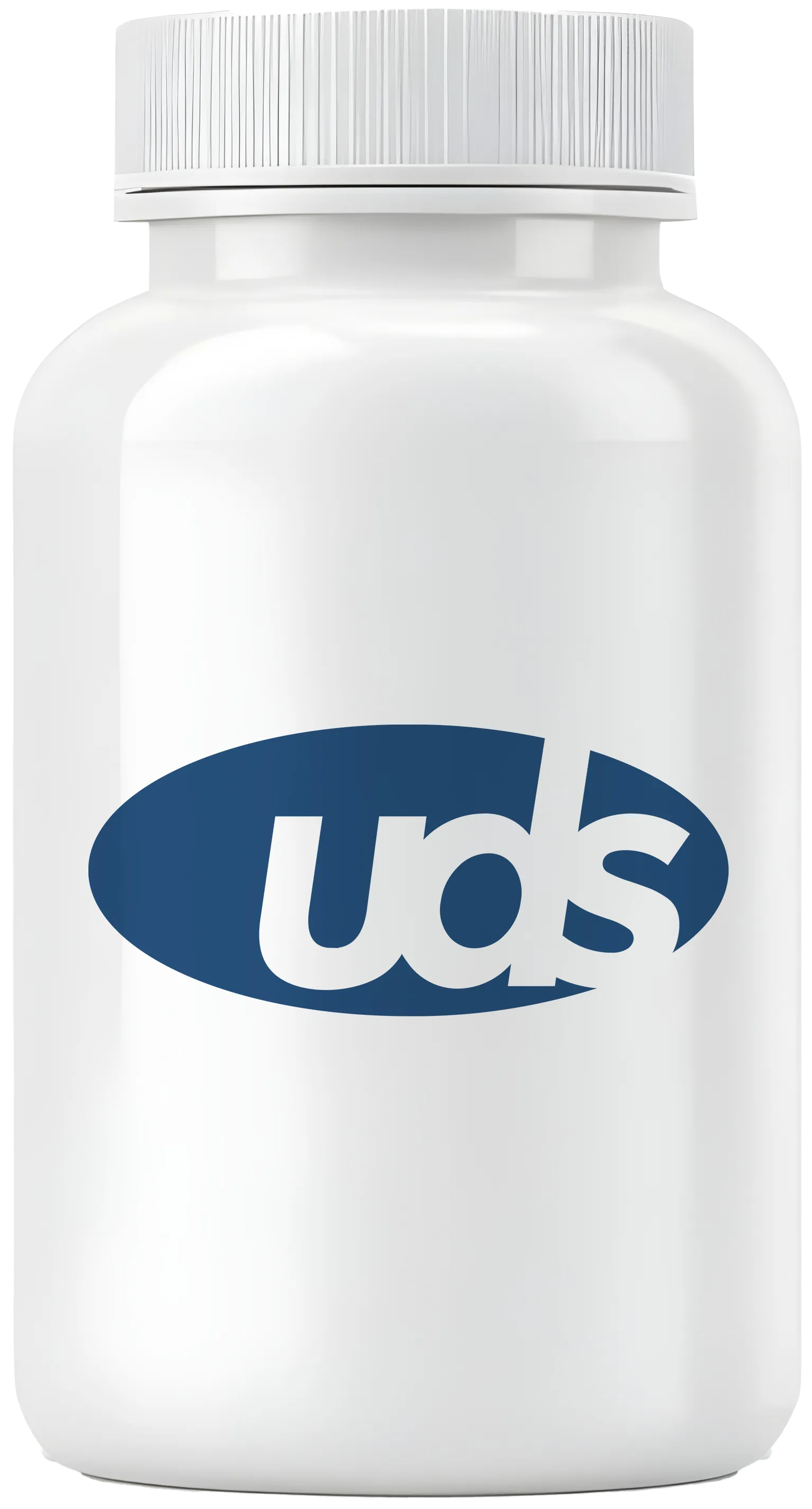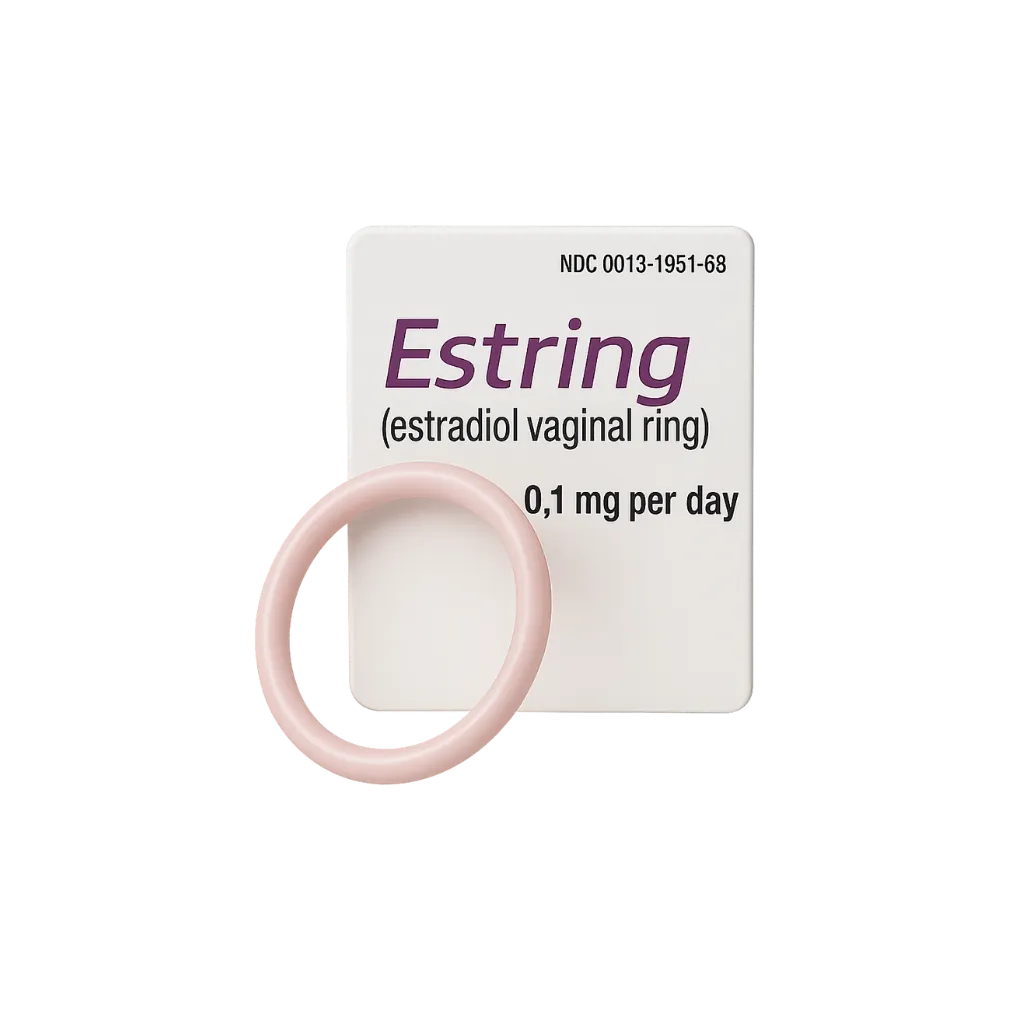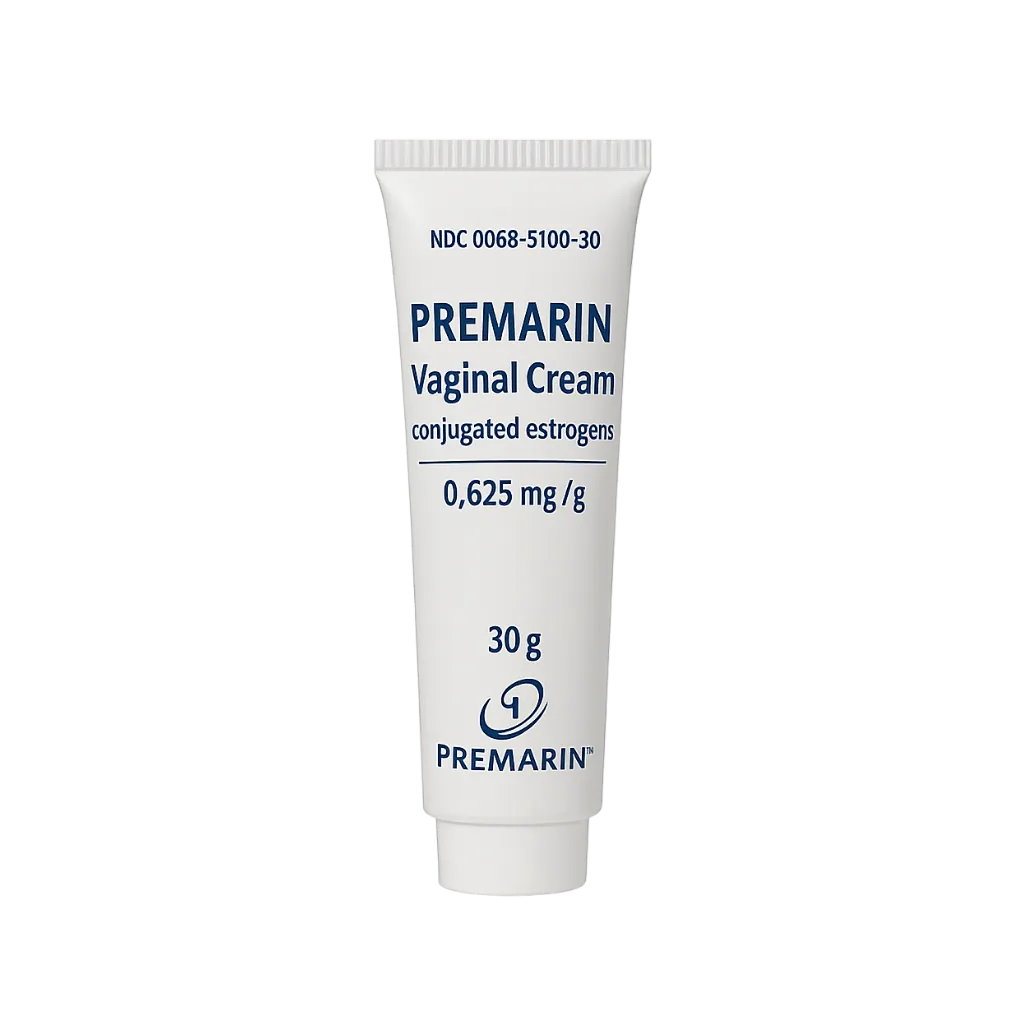How to apply Premarin cream externally?

Estrogen is a female hormone that regulates many processes in a woman’s body, including vaginal acidity and lubrication. Menopause causes estrogen levels to drop, leading to symptoms such as vaginal dryness, hot flashes, and mood changes. Vaginal estrogen cream like Premarin delivers estrogen directly to the vagina, minimizing systemic absorption while relieving local symptoms.
Intravaginal Application via Applicator
- Remove the cap from the tube.
- Screw the nozzle of the applicator onto the tube.
- Squeeze the tube gently and use the markings on the applicator to measure the correct dose.
- Unscrew the applicator from the tube.
- Lie on your back with knees drawn up. Insert the applicator deeply into the vagina and press the plunger back to its original position.
- To clean, remove the plunger from the barrel and wash both parts with warm water and mild soap.
External Application with Fingertip
- Wash and dry your hands thoroughly.
- Squeeze the tube and measure the correct dose (0.5 g covers about half of your index finger).
- Identify the vaginal opening and urethral area (where urine exits). Spread the cream over these areas; you do not need to insert it deeply.
- Wash your hands again after application.
Premarin Cream FAQs
What Does Premarin Cream Treat?
Premarin cream is approved to treat atrophic vaginitis and vaginal atrophy due to menopause. It relieves symptoms such as vaginal dryness, itching, inflammation, and pain during or after intercourse.
What Side Effects Are Associated?
Common side effects include:
- Bloating and stomach pain
- Breast pain and tenderness
- Lack of energy and general weakness
- Mood changes and depression
- Fluid retention
- Nausea
- Headache
- Vision changes
- Vaginal discharge and yeast infection
- Hair loss
Rare but serious side effects may include blood clots, heart attack, stroke, dementia, increased risk of ovarian, endometrial, or breast cancer, gallbladder disease, liver problems, high blood pressure, high blood sugar, uterine fibroids, and severe allergic reactions. Always consult your healthcare professional and report adverse events to the FDA at 1-800-FDA-1088 or www.fda.gov/medwatch.
What Drug Interactions Are There?
Premarin cream may interact with:
- Phenobarbital
- St. John’s Wort
- Carbamazepine
- Clarithromycin
- Rifampin
- Erythromycin
- Ritonavir
- Itraconazole
- Ketoconazole
- Grapefruit juice
Shop Medications
Who Should Not Use Premarin Cream?
Do not use if you have:
- Unusual vaginal bleeding
- Certain cancers (uterine, breast)
- History of heart attack, stroke, or blood clots
- Liver disease or bleeding disorders
- Allergy to any ingredient
- Known or suspected pregnancy
Do not use to prevent heart disease or dementia. Combined estrogen–progestin therapy should not be used for cardiovascular or dementia prevention in women aged 65 or older.
Warnings and Precautions
Inform your healthcare provider if you have:
- Hypothyroidism
- Asthma
- History of angioedema
- Migraines or epilepsy
- Diabetes or lupus
- Blood disorders such as porphyria
- High blood calcium levels
- Heart, liver, or kidney problems
- Endometriosis
- Use of contact lenses
- Breastfeeding or plans to breastfeed
How Long Does It Take to Work?
In clinical studies, relief from painful intercourse was noted after 12 weeks. Individual results may vary.
Typical Dosage
Your provider will prescribe the dose. Common regimens for atrophic vaginitis: 0.5 g–2 g vaginally once daily for 21 days, then off for 7 days. For painful intercourse: 0.5 g once daily for 21 days then off for 7 days, or 0.5 g twice weekly continuously.
How Long Does a Tube Last?
Depending on dose and frequency, one tube may last up to 6 months.
Related Medications
- Estrace (estradiol)
- Premarin (conjugated estrogens)
- Prempro (conjugated estrogens/medroxyprogesterone)
- Enjuvia (synthetic conjugated estrogens)
- Cenestin (synthetic conjugated estrogens)








